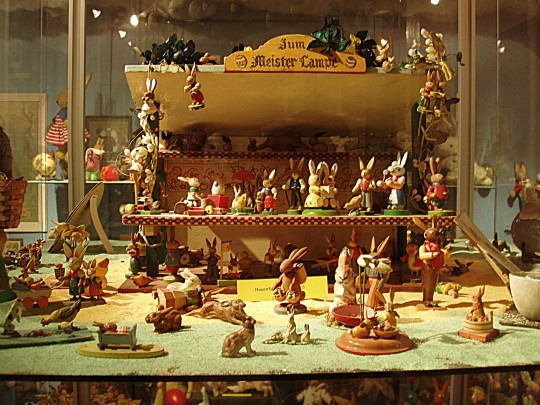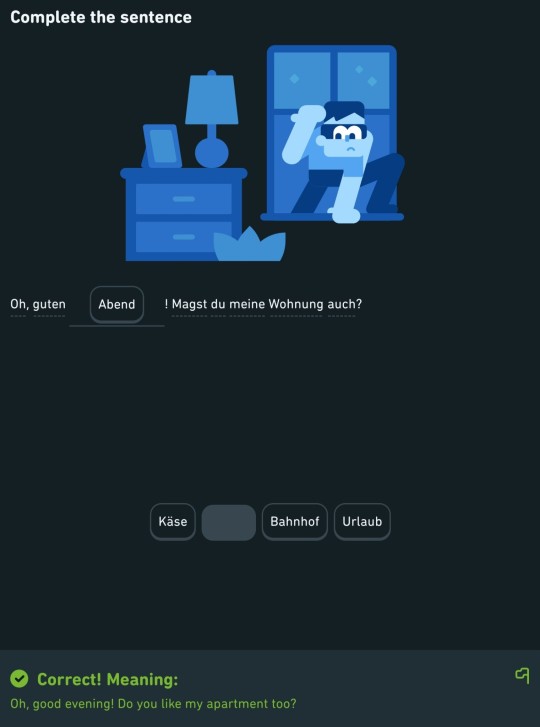Text
Heute in 130 Jahren wird Commander Shepard geboren 👍🎈✨🎉🎇🌌🚀🛰️☄️
Heute in 137 Jahren wird Commander Shepard geboren 👍🎈✨🎉🎇🌌🚀🛰️☄️
590 notes
·
View notes
Text
The Easter Bunny / Easter Hare
In German Easter tradition, the Easter Bunny is an imaginary rabbit or hare who paints eggs at Easter and hides them in the garden. Children search for Easter eggs on the morning of Easter Sunday. The motif of the Easter Bunny has recently spread in the popular culture of Easter, also through its commercial use, and has largely replaced earlier bringers of the Easter egg.

As far as is known, the Easter Bunny was first mentioned in the dissertation of the Frankfurt doctor Johannes Richier, who received his doctorate in 1682 under the respected Heidelberg professor of medicine Georg Franck von Franckenau with his treatise "De ovis paschalibus - von Oster-Eyern". The son of the pastor Jean Richier, who had fled France for religious reasons, describes a custom in Upper Germany, the Palatinate, Alsace and neighbouring regions, as well as Westphalia, according to which an Easter Bunny lays the eggs (ova excludere) and hides them in gardens in the grass, bushes, etc., where they are eagerly searched for by children amid laughter and to the amusement of the adults (cum risu et iucunditate seniorum). He calls the Easter Bunny hiding the eggs “a fable that is told to simpletons and children” (fabula, que simplicioribus et infantibus imponunt).

According to cultural studies, the reason for the strong upswing that belief in the Easter Bunny experienced in the 19th century can be found in the industrial production of cheap beet sugar, which made the production of affordable chocolate bunnies and eggs possible in the first place.

The connection between the Christian Easter festival and the egg as a symbol has been known in various European countries since the Middle Ages at the latest, and may even date back to earlier. There is also an older interpretation of the rabbit as a symbol of resurrection since Ambrose. The diverse Christian symbolism of the rabbit found expression in many works of art in the Middle Ages, see Rabbit in art. The connection between the rabbit and the Easter egg tradition is still unclear, however, even if the fertility of rabbits in itself has a close connection to spring. The following hypotheses are often put forward:
Some early painted Easter eggs show the three-hare image, a depiction of three hares with only three ears in total, but each hare having two ears due to the "double use" of ears; this is a well-known symbol for the Holy Trinity. It is possible that this depiction may have given rise to the idea of the hare as an egg supplier.
In one passage in the Bible, Psalm 104:18, older translations speak of "hares". The reason for this was the Latin translation of Proverbs 30:26, in which Jerome translated the Hebrew "schafan" (rock hyrax) as "lepusculus" (hare). Since late antiquity, this passage has been interpreted as a symbol for the weak human (hare) who seeks refuge in the rock (Christ). This interpretation established the symbolism of the hare in Christian iconography.
It is widely considered harmless to tell young children that the Easter Bunny brings eggs and sweets for Easter. Psychologists believe that this illusion stimulates the imagination and supports cognitive development. However, children's critical questions and doubts should be supported so that their belief in the Bunny eventually disappears by itself, also through interaction with other children.
The Easter Bunny was spread outside of Europe by German-speaking emigrants. It has gained a certain popularity in the USA in particular. In English, the term "Easter Bunny" predominates over the literal translation "Easter Hare", so the figure is often understood to be a rabbit.
In Australia, the "Easter Bilby" has been placed alongside the "Easter Bunny" since the 1970s. The aim is to draw attention to the endangered species of the greater burrowing bandicoot ("Bilby"), not least due to the spread of European rabbits, and to raise money for a conservation fund by selling chocolate bilbies.
137 notes
·
View notes
Text
Dieses Gefühl der Nutzlosigkeit wenn man durchs Haus geht und es gibt nur noch eine Uhr die manuell umgestellt werden muss
73 notes
·
View notes
Text

(ID: Duolingo phrase featuring an image of a thief breaking into a house, text in German translates to "Oh, good evening! Do you like my apartment too?")
751 notes
·
View notes
Text
Wo kann man Pantoffeltierchen kaufen?
Im Einzellhandel
1K notes
·
View notes
Text
Salvete, Gaius Iuli'us Caesar sum et pilorum album quam nivem habeo et aureos, sed interdum virides lauros et imperium Romanum construxi et eius eram quasi primus Caesar (sic merui nomen meum) et multi indicant mihi me Marcus Crassus similem esse (si non scitis Marcus Crassus, vobis opus est pecunia). Brutus non est filius meus quod est bonum nam ET TU, BRUTE???!?. Iamia sum sed dentes rectos et albos habeo. Pallidam cutem habeo. Etiam, maga sum magicum ludum, nomine Pigverruca, visitans quod desinam (ego sum MMCXIV), veni, vidi, vici. Classicus sum (si vos id non suspexistis) et multas togas emptas in Basilica Iulia habeo. Ratio amo et bellum Gallicum gero. Veluti, hodie omnia Gallia occupata. Omnia Gallia? Certe! Non est vicus parvus inter Aquarium, Babaorum, Laudanum et Brevisbonum. Ambulabam foris Pigverruca. Ninxit et pluvit et Gallia divisa erat in partes tres, quod me fecit felix. Marcus Porcius Cato me observavit. Digitum medium illo monstravi.
26K notes
·
View notes
Note
You know how in languages like english we use shortened words like wtf, sth for something, wbu instead of what about you?
What shorter versions of words is it common to use in german, when texting for example?
Ty
Checked through the wikipedia page for the things that i have heard of:
wd -> Wieder da -> back [after being afk]
hdgdl, hdl -> Hab dich (ganz doll) lieb -> love ya
hdf -> Halt die Fresse -> shut up
gw -> Glückwunsch -> Contrats
kA -> Keine Ahnung -> No idea
kp -> Kein Problem -> no problem / kein Plan -> no idea
mMn -> meiner Meinung nach -> in my opinion
mfg -> Mit freundlichen Grüßen -> with friendly regards [at end of message]
mom -> Moment -> one moment please
118 notes
·
View notes
Note
Ich arbeite bei der Deutschen Welle und ich dachte auf Tumblr wäre ich sicher vor der Arbeit!
Aber ich nehme den guten Hinweis für ein neues Format gleich mal mit 😂
👀
23 notes
·
View notes
Text
Wenn Deutsche Welle eine Rubrik über Handwerksarbeiten macht, könnten sie es DW-40 nennen
57 notes
·
View notes
Text
Konzept: Mentos mit Bifi-Geschmack
557 notes
·
View notes
Text
Ein DDR-Spielekonsolenhersteller
Zony
699 notes
·
View notes
Text
Wie wischt ein norddeutscher Ritter im 12. Jahrhundert den Boden?
Er feudelt
320 notes
·
View notes
